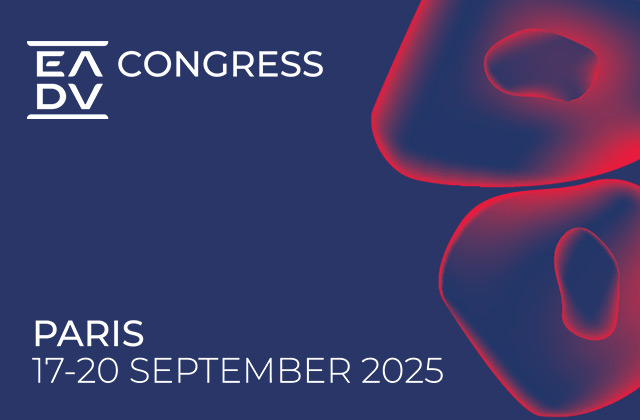
Introduction
Members of our CNS team attended the American Academy of Neurology (AAN) virtual annual meeting, which took place April 17-22. As expected, it was an interesting and useful event, full of industry therapeutics updates, clinical research data, scientific sessions, and educational courses presented in a series of virtual panels, posters, and fireside chats. It captured and shared the latest advancements in neurology. In this article, we reflect on some of the key takeaways that stood out to us from the conference.
In terms of neurological disorders, multiple sclerosis, epilepsy, migraine, and movement disorders were the highlight of the conference.
- Multiple Sclerosis (MS): As always, there was a lot of attention focused on MS. Most of the major players released more data on existing drugs to further cement their status as major MS players. These included Roche/Genentech, Novartis, and Biogen. In addition, TG Therapeutics, with their more convenient CD20 molecule is emerging as a player of interest within the space.
- Epilepsy: There was also a focus on different modalities for rare epilepsy disorders such as Dravet Syndrome and Lennox-Gastaux. From a broader epilepsy perspective, SK Biopharmaceuticals is an interesting company to watch as they released compelling data for their therapy.
- Migraine: CGRP (calcitonin gene-related peptide) medications dominated the migraine space at AAN, with the variety of manufacturers including Abbvie, Teva, and Alder releasing data further cementing their places within the market. The emergence of non-CGRP therapeutics is also an area to watch.
- Movement disorders: There were industry updates for Parkinson’s disease from Sanofi Genzyme, Acadia, Adamas, and Sunovion Pharmaceuticals focused mostly on the complications of the disease (i.e., motor symptoms or non-motor symptoms, usually caused by OFF-episodes). Sanofi’s disease modifying treatment, Venglustat, recently missed its primary endpoint and the company stopped all investment in this space. Development of Venglustat for Fabry and Gaucher disease, Autosomal Dominant Polycystic Kidney Disease (ADPKD), and GM2 gangliosidosis continues.
The conference also addressed other topics that were interesting from our point of view. Below, we provide a quick review.
COVID-19
As expected, COVID-19 was a focus of conversation at this year’s AAN meeting. The discussions centered on its effects in clinical practice, with a particular focus on:
- Common neurological complications both during and post-infection
- Its effects and implications for patients with neurological disorders.
Neurological Complications in COVID-19 Patients
For some patients, COVID-19 has been associated with neurological complications. These include delirium, encephalitis and encephalopathy, Guillain-Barre syndrome, stroke, and seizures. Stroke seems to be one of the most common neurological complications of severe and advanced COVID infections, with an incidence of 1.8% and a 34.4% mortality rate. A less severe complication of COVID-19 are headaches.
Post-COVID Neurological Complications
A new syndrome, called the Post-COVID-19 Neurological Syndrome (PCNS), has been characterized by prolonged muscle weakness and other forms of myopathy, dizziness, headaches, mood disorders, chronic fatigue, neuropsychological disorders (e.g., depression, sleep impairment and anxiety), and even PTSD.
In a recently published paper on the topic (Wijerathne & Crewther, 2020) the global neurology community is encouraged to perform ongoing neurological and cognitive/affective monitoring of all cases of COVID-19 (irrespective of the severity from asymptomatic to mild to severe) for PCNS.
Another complication potentially resulting from COVID-19 infection is postural orthostatic tachycardia syndrome (POTS). Although not only related to the COVID-19 virus (other causes may include small-fiber neuropathy, norepinephrine imbalance, hypovolemia, etc.), several papers have reported complications in post-COVID-19 patients that are very similar to POTS.
The AAN panel discussed the implications of these COVID-19 complications for the healthcare system. They also emphasized the potential need for recruiting more neurology specialists to manage these patients.
COVID-19 in Patients with Neurological Disorders
It is important to keep paying attention to the development of neurological disorders in COVID patients either as stand-alone disorders or as complications of current neurological diseases and treatments. This is especially important for patients taking antibody treatments that affect the immune system such as in MS.
Genentech discussed the implications of COVID-19 vaccines for MS patients on disease-modifying treatments (DMTs). This patient population may not only be at increased risk of infection because they are already immunocompromised, but may also potentially experience a reduced immunological response to the COVID-19 vaccination. The company provided early data on COVID-19 outcomes in patients with MS. It discussed what is known about vaccine effectiveness in those on anti-CD20 and S1PR agents, which are proposed to have attenuating effects based on their mechanisms of action.
Alzheimer’s Disease: Should we approve or not approve aducanumab?
Another interesting presence at the AAN meeting was aducanumab, the human monoclonal antibody studied for the treatment of Alzheimer’s disease (AD). The drug, co-developed by Eisai and Biogen, has the potential to be the first disease-modifying therapy in Alzheimer’s focused on reducing the accumulation of amyloid plaque, a potential cause of the disease. We have discussed in our previous CNS white papers (Part I and Part II) the clinical trial history and evidence for aducanumab.
The reasons behind the FDA’s delay in deciding whether to approve aducanumab were clarified (i.e., modest clinical effects, contrasting results between Study 302 and 301, limited evidence for the mechanism of action). Arguments for why the drug should be approved (or not approved) were also presented. During plenary sessions and an industry-sponsored session, various KOLs shared the pros and cons for approval. They can basically be summarized as follows:
Pros:
- High critical unmet need
- Disease-modifying potential in some patients
Cons:
- Mixed data
- Concerns about amyloid‐related imaging abnormalities (ARIA) at therapeutic doses
- Logistical concerns about delivering IV therapy in neurology offices
- High societal cost with unclear benefits
Innovative Clinical Trial Designs
Another interesting topic was the need for innovative clinical trial designs, given the COVID-19 pandemic, diversity issues, recent technological advances, and more.
COVID-19
Clinical trials in the future will have to be more sensitive to COVID-19. The pandemic brought many in-hospital and out-of-hospital trials to a halt. Many trials will have to shift to alternative forms of consent (e.g., telephone, deferred consent) and electronic, remote monitoring. Additionally, paper-based case report forms (CRFs) might become history. Investments in the above technologies will create more value in the future but might be adopted at different speeds in different parts of the world. Tele-health will be key in the future, especially for rare disease clinical trials where finding patients was already a challenge even before the pandemic.
Patient Diversity
Discussions about diversity are increasingly common in clinical practice. Clinical trials many times focus on providing evidence for a very limited pool of patients. For example, most migraine patients in the clinic are 40+ year old caucasian women, but this is not the only population of patients who suffer from migraine, by far. In fact, 1 billion people are affected by migraine worldwide.
More generally, global clinical trials often mirror US studies. However, moving forward, many argue that we should emphasize the importance of enrolling other ethnicities in clinical trials, to provide a better understanding of whether therapies will work universally in the disease population. Similarly, many contend that diversity is also needed amongst health care professionals. There is an acute need to train and recruit more physicians with diverse backgrounds to help bring different perspectives to trial outcomes and establish trust across patient backgrounds.
Clinical Trials Inspired by Clinical Practice
Owing to the complexity of many neurological disorders, KOLs in the field emphasized the need to draw experience from the clinic into clinical trial design. Due to strict inclusion criteria of many trials, studies often do not capture all populations that suffer from the disease. In terms of treatment, more head-to-head comparison studies across neurological disorders should be performed to inform decisions regarding the sequencing of therapies. Equally, combination therapies should also be assessed to explore whether combinations of different mechanisms of action in low doses could potentially be synergistic, leading to better results for patients.
New Technologies
The opportunity to leverage new devices for measuring specific clinical outcomes was presented, particularly for movement disorders. Additionally, the introduction of more sensitive outcome measures is believed to lead to a reduction in clinical trial duration. For example, imaging techniques such as Magnetic Resonance Imaging are already starting to become common practice for Alzheimer’s disease and MS.
More Robust Trials
Many trials that show a signal in phase 2 end up failing in phase 3 due to a lack of true understanding regarding the trial effect. Spending more time on understanding the rationale and dosing regimens in phase 2 was highlighted as a critical need for helping to ensure the success of subsequent trials (even if it delays them somewhat). Also, a greater emphasis on more robust phase 2 trials makes it more likely that many phase 3 trials will not end up being conducted due to the greater understanding of phase 2 results. This can lead to a reduction of time and money spent on “dead-end” clinical development.
Integrating Patients and Patient Journeys into the Conference
Akcea Therapeutics
In this presentation, Akcea Therapeutics (owned by Ionis Pharmaceuticals) presented Tegsedi®, the “First and Only Self-Administered, Subcutaneous Treatment for the Polyneuropathy of Hereditary ATTR Amyloidosis in Adults.”
As part of this therapeutic update session, a patient was invited to talk about her journey with hereditary ATTR amyloidosis polyneuropathy. Her stories were intertwined with presentations from clinicians focusing on the diagnosis, disease symptoms and management, and clinical trial results showing the efficacy of Tegsedi.
Interestingly, the patient’s journey was presented gradually and evolved as each talk was given, until she ultimately became aware of Akcea’s new treatment, Tegsedi.
This was a unique presentation that connected the unmet need in ATTR amyloidosis to the new treatment option with an actual patient’s journey. It used an effective and engaging style, and could serve as a model for other companies seeking to put the patient first in their presentations, especially in rarer diseases.
Lundbeck
A presentation by Lundbeck discussed the CaMEO study in episodic and chronic migraine. It focused on the participant’s, their partner’s, and their child’s perspectives on the effects of migraine and the treatment. Endpoints captured included questions about the disease’s effect on relationships, mood, career, etc.
The company highlighted that the patient should be the primary factor when assessing treatments for chronic diseases. Interestingly, throughout the presentation, a patient was present and discussed the impact of the disease on her and her family’s lives. Lundbeck then discussed results from their PROMISE-2 trial on chronic migraine, with the patient discussing her experiences with the drug (Vyepti®, a humanized monoclonal antibody that received FDA approval in February 2020 for the preventive treatment of migraine in adults).
Similar to the session presented by Akcea Therapeutics, Lundbeck managed to bring a different perspective on the disease while also supporting the efficacy and safety data of their proposed treatment.
Conclusion
Given the challenges in the COVID world, it is not surprising that the conference was focused on COVID considerations within CNS. As the COVID situation hopefully evolves and the world returns to normal, we do expect to see an increase in activity and movement within the CNS realm; both with more promising data and continued renewed interest from a variety of biopharma manufacturers.






